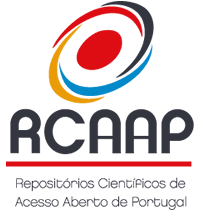Lithium: a crucial non-toxic metal for the energy transition
DOI:
https://doi.org/10.48797/sl.2024.154Keywords:
Invited SpeakerAbstract
Lithium is a strategic metal globally. The expanding market for lithium (Li) batteries, utilized in a diverse range of products from electric vehicles and renewable energy storage and backup to smartphones and laptops, is driving a growing demand for lithium, amplifying the risk of supply shortages and surging prices. With the ongoing energy transition, advanced geological exploration technologies are essential to uncover mineral deposits containing critical elements like Li. Currently, most of it originates from pegmatites, primarily spodumene. Spodumene concentrates can be obtained from various sources such as tailings, waste piles, quarries serving ceramic and glass industries containing spodumene in pegmatites. The majority of lithium deposits in Europe are associated with Li–Cs–Ta (LCT) pegmatites. While traditional exploration methods rely heavily on geochemical surveys and related tools, there is a pressing need to assess alternative techniques, particularly remote sensing (RS) and geophysics. Recent developments have explored the application of remote sensing data in detecting lithium (Li), focusing on identifying either pegmatite or brine deposits. The Greenpeg H2020 project that was focused in Europe is scheduled to be concluded in 2024. However, our objective extends beyond this timeline, aiming to implement exploration tools tailored for pegmatites in tropical environments. Our cutting-edge research on Critical Raw Materials (CRM) within the Community of Portuguese Language Countries (CPLP) primarily involves a comparative study of Li minerals sourced from pegmatites across CPLP regions. With studies specialized in pegmatites in Portugal, Mozambique, and Brazil, our overarching goal is to secure research that conduct an intensive analysis of each pegmatite field type and establish connections between them. By doing so, we aim to enhance exploration techniques specifically tailored for rare-element pegmatites, thereby advancing our understanding and optimizing the utilization of these valuable mineral resources. With that we hope to help to secure energy transition for Europe.
Downloads
Published
How to Cite
Issue
Section
License
Copyright (c) 2024 Alexandre Lima

This work is licensed under a Creative Commons Attribution 4.0 International License.
In Scientific Letters, articles are published under a CC-BY license (Creative Commons Attribution 4.0 International License), the most open license available. The users can share (copy and redistribute the material in any medium or format) and adapt (remix, transform, and build upon the material for any purpose, even commercially), as long as they give appropriate credit, provide a link to the license, and indicate if changes were made (read the full text of the license terms and conditions of use).
The author is the owner of the copyright.









